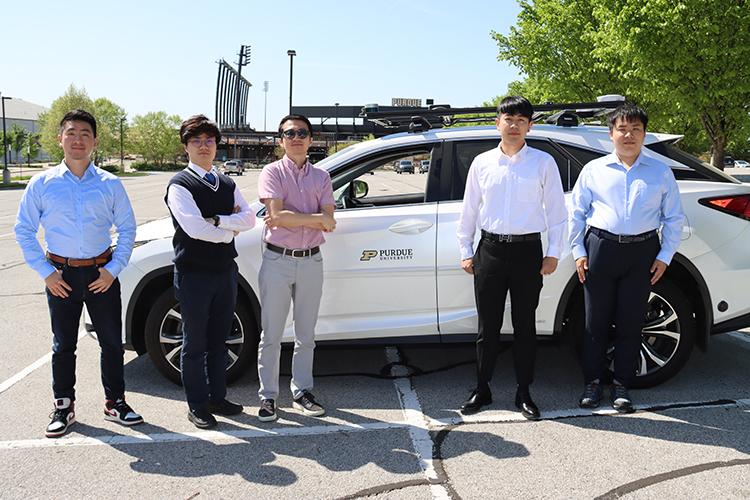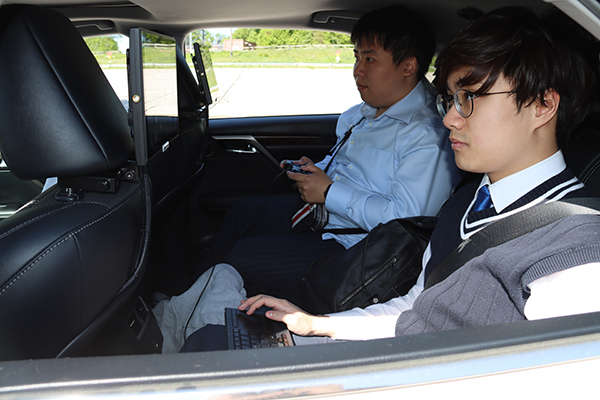Improving Road Safety

Technology takes control of vehicle to reduce distracted driver events
Purdue civil engineering researchers are developing technology to improve driving safety by building driver digital twins with a better understanding of driver distraction events.
According to the National Highway Traffic Safety Administration (NHTSA), there were 38,824 people killed in motor vehicle crashes on U.S. roadways in 2020. Among these cases, 3,142 were a result of at least one of the drivers being distracted.
In an effort to improve driver safety, a research team led by Ziran Wang, assistant professor of civil engineering, has developed a semi-supervised approach to use computer vision technologies to detect when a driver is distracted. When distracted driving is detected, the system issues an audio alert or haptic alert (vibration on steering wheel or driver seat) to the driver. If there is no action from the driver, the second step is to provide control command. If the vehicle is in manual mode, then the vehicle takes over the control from the driver, changing into automated mode to ensure safe driving for a short duration. If the vehicle is already in automated driving mode, then it will automatically slow down and find a safe place to park.
“As technology advances, so do opportunities for driver distractions,” Wang said. “From texting while driving to chatting with passengers, all of these factors lead to an increase of risk to everyone on the road.”
Yunsheng Ma, a civil engineering PhD student and graduate researcher, said this research is about saving lives.
“Just one single distracted driver can result in injury and death of many others on the highway,” Ma said. “This technology isn’t just to protect the driver from distractions — it is to protect all the other drivers, passengers and pedestrians around them as well.”

PhD students Yunsheng Ma (left) and Juanwu “David” Lu test automated driving features on their automated vehicle platform.
However, Wang said, a driver can also “over-trust” such automated systems. When the automated driving features are engaged, the driver is allowed to take their hands off the steering wheel and feet off the pedals, but they need to stay alert and get ready to take over the driving task when the system requests. Due to human nature, the attention from the driver on road conditions can diminish when they are not in charge of driving, and distracted behavior can decrease the driver’s capability of taking over, which in turn leads to traffic accidents.
“As a key element of intelligent vehicles, advanced driver-assistance systems have been designed to support human drivers either by providing warnings to reduce risk exposure or by assisting the vehicle actuation to relieve drivers’ burden on some of the driving tasks,” Wang said. “When functioning, these systems can help the driver safely navigate the vehicle through tricky traffic scenarios when they are distracted by some other tasks.”
Wang said the research is still in the early prototype phase on their lab’s automated vehicle platform, but the team has been presenting its research progress at top AI conferences, including the 2023 Conference on Neural Information Processing Systems (NeurIPS) and 2023 Conference on Computer Vision and Pattern Recognition (CVPR).
